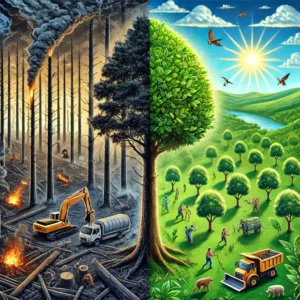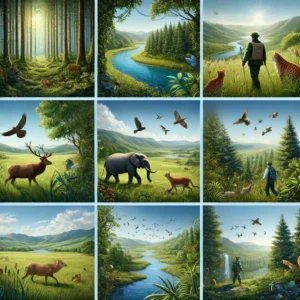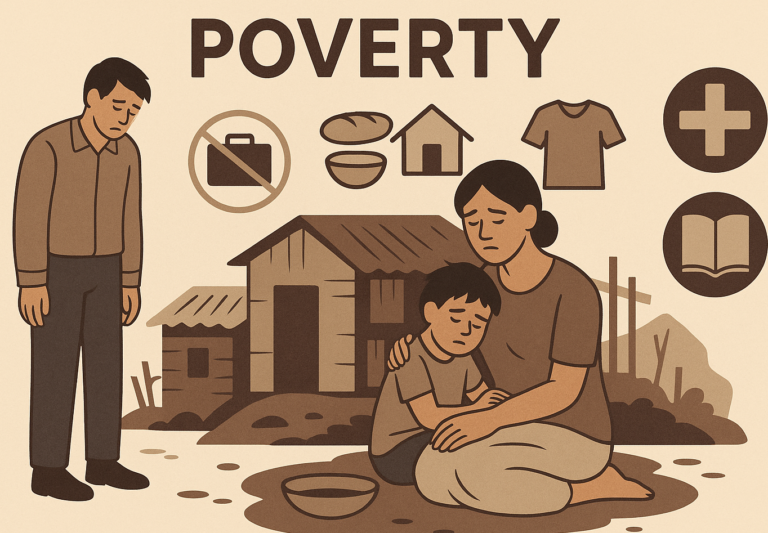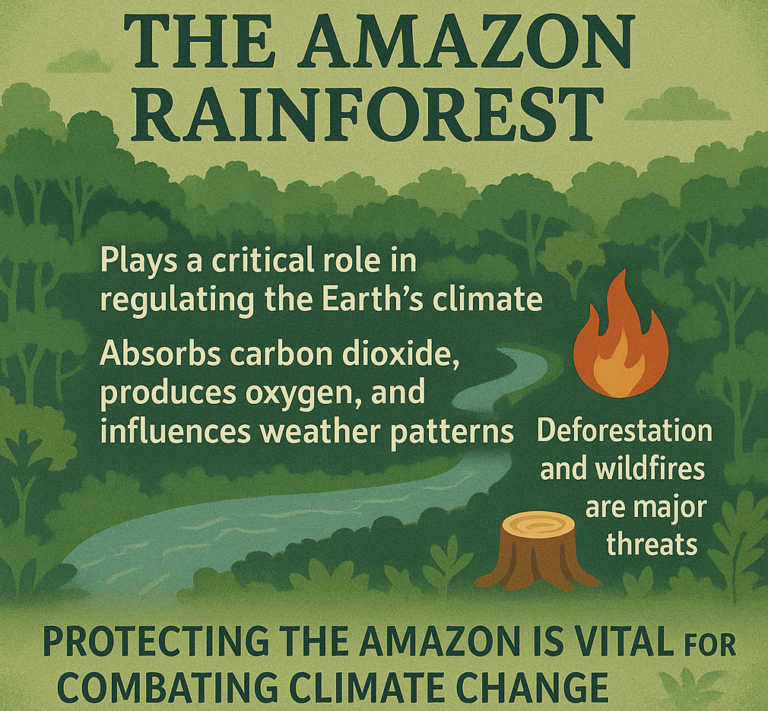Deforestation and reforestation are two key environmental concepts that are essential to understanding how human activities impact the planet’s forests, ecosystems, and climate. Here’s an easy-to-understand explanation of both terms, how they relate to each other, and why they matter.

What is Deforestation?
Deforestation is the process of removing or clearing forests or trees from a particular area. This is often done to make way for agricultural activities, urban development, logging, or mining. Deforestation has become a major environmental issue, as it has harmful effects on the environment, biodiversity, and the climate.
Why Does Deforestation Happen?
- Agriculture: One of the main causes of deforestation is the need for more land to grow crops or raise livestock. In many tropical regions, large areas of forest are cut down to create space for cattle ranching, soybean farming, or palm oil plantations.
- Logging: Trees are cut down for their wood, which is used in building materials, paper production, furniture, and other goods. In some cases, forests are logged illegally or unsustainably, which leads to long-term damage.
- Urbanization: As populations grow, more land is needed for housing, roads, factories, and infrastructure. This leads to forests being cleared to make space for cities and towns.
- Mining: Forests are sometimes cleared to access valuable minerals and resources hidden underground. This can involve the destruction of large forested areas to dig for gold, oil, or other minerals.
Consequences of Deforestation:
- Loss of Biodiversity: Forests are home to a wide variety of plant and animal species. When forests are destroyed, the habitats of many species are also destroyed, leading to a loss of biodiversity. Some species may become endangered or extinct because they can no longer survive in their natural habitat.
- Climate Change: Trees play a crucial role in absorbing carbon dioxide (CO₂) from the atmosphere. When forests are cut down, this carbon is released into the air, contributing to global warming and climate change. Deforestation is one of the largest sources of human-induced CO₂ emissions.
- Soil Erosion: Tree roots help anchor the soil in place. Without trees, the soil can become loose and more prone to erosion, especially during heavy rain. This can lead to landslides, flooding, and the loss of fertile soil for agriculture.
- Disruption of Water Cycles: Trees also play a role in maintaining the water cycle. When forests are removed, it can affect rainfall patterns, leading to droughts or reduced water quality in nearby rivers and lakes.
- Impact on Indigenous Communities: Many indigenous people live in and depend on forests for their livelihoods, culture, and traditions. Deforestation often displaces these communities, forcing them to leave their homes and lose their way of life.
What is Reforestation?
Reforestation is the process of planting trees in areas where forests have been cut down or destroyed. Reforestation can help reverse the effects of deforestation by replenishing forests and restoring damaged ecosystems. It is a crucial method for fighting climate change, restoring biodiversity, and protecting water sources.
Why is Reforestation Important?
- Combatting Climate Change: Trees absorb carbon dioxide (CO₂) from the atmosphere during photosynthesis, helping to reduce the amount of greenhouse gases. Planting more trees through reforestation can help offset some of the carbon released by deforestation and other human activities.
- Restoring Biodiversity: Reforestation can help recreate habitats for plants and animals that have been displaced by deforestation. A healthy forest can support a diverse range of species, from insects to large mammals.
- Preventing Soil Erosion: Planting trees helps prevent soil erosion because tree roots hold the soil together, reducing the risk of landslides and flooding. Reforestation can restore soil health and improve agriculture in degraded areas.
- Improving Water Cycles: Trees help regulate the water cycle by absorbing water from the soil and releasing it into the atmosphere through a process called transpiration. This can help restore local rainfall patterns and maintain water quality in rivers and lakes.
- Providing Economic Benefits: Reforestation can create jobs in tree planting, forest management, and conservation. It can also provide sustainable resources, such as timber and non-timber forest products, for local communities.
Deforestation vs. Reforestation: Key Differences
| Aspect | Deforestation | Reforestation |
|---|---|---|
| Definition | The removal of trees or forests for various human needs. | The process of planting trees to restore or create forests. |
| Causes | Agriculture, logging, urbanization, and mining. | Planting trees to restore ecosystems and combat climate change. |
| Environmental Impact | Leads to loss of biodiversity, soil erosion, and increased CO₂ emissions. | Helps combat climate change, restores habitats, and prevents soil erosion. |
| Effect on Climate | Contributes to global warming and climate change. | Absorbs CO₂, reduces climate change, and helps maintain ecosystems. |
| Main Goal | Meet human needs at the cost of environmental damage. | Restore balance to ecosystems and mitigate environmental harm. |
How Can Deforestation and Reforestation Be Managed?
- Sustainable Forestry: Instead of clear-cutting forests, we can practice sustainable logging, which means only cutting down trees that are needed and allowing the forest to regenerate naturally. This helps reduce the impact of logging on the environment.
- Agroforestry: This involves integrating trees with agricultural crops to create more sustainable farming practices. Agroforestry can help reduce the need for large-scale deforestation while still providing food and resources for people.
- Conservation and Protection: Governments and organizations can set up protected areas, such as national parks or nature reserves, to stop deforestation in important areas. Conservation efforts can help preserve existing forests and prevent further destruction.
- Reforestation Projects: Many countries and organizations are investing in large-scale reforestation efforts, such as planting trees in deforested areas, replanting native species, and restoring degraded ecosystems.
- Reducing Consumption: We can reduce the demand for wood products by using sustainable materials and reducing consumption of paper and plastic. Supporting businesses that practice sustainable logging can also help.
Examples of Successful Reforestation Projects
- China’s Green Great Wall: In an effort to combat desertification, China has planted billions of trees along the Great Green Wall (a series of tree planting projects) to stop the spread of the Gobi Desert. This large-scale reforestation effort has helped restore degraded lands and prevent soil erosion.
- Costa Rica: Costa Rica has implemented a national program to protect and restore forests. Through reforestation and sustainable land management practices, the country has increased its forest cover by more than 20% since the 1980s.
- India’s Green India Mission: India has launched the Green India Mission to increase forest cover, restore degraded ecosystems, and mitigate climate change. The program aims to plant millions of trees and protect the country’s biodiversity.
Conclusion:
Deforestation and reforestation are two sides of the same environmental coin. While deforestation has caused many environmental problems, reforestation offers a solution to restore forests, fight climate change, and protect biodiversity. The key to a sustainable future lies in finding a balance between human development and the preservation of the natural world. By supporting reforestation efforts, promoting sustainable practices, and reducing deforestation, we can ensure that forests continue to thrive for generations to come. Every small action counts: whether it’s planting a tree, supporting conservation efforts, or choosing sustainable products, we all have a role to play in protecting the planet’s forests.











